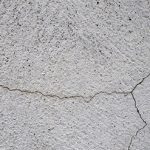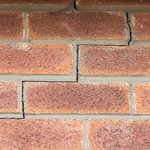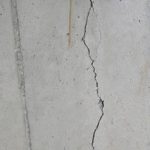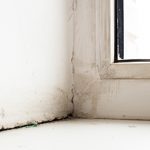When homeowners discover cracks in their foundation, they’re faced with a decision: should they attempt a do-it-yourself repair or call in professionals?
This choice isn’t just about cost—it’s about understanding the complexity and potential risks associated with foundation repairs.
DIY solutions can be tempting, particularly for those who are handy or looking to save money. However, incorrectly addressing foundation issues can lead to more significant problems down the line, including structural damage that compromises the safety of the entire home. On the other hand, professional repairs offer expertise and guarantees but at a higher initial cost.
Causes of Foundation Cracks
Every homeowner fears the appearance of foundation cracks, but not all of them are symptomatic of catastrophic failure. To address them appropriately, it’s essential to understand their causes.
- Soil Settlement
As time goes by, the soil beneath a home tends to settle. This natural process can result in uneven pressure on the foundation. When the pressure becomes too much to bear, cracks can form as the foundation shifts to accommodate the changes. - Soil Expansion and Contraction
Certain soil types, like clay, have the propensity to expand when wet and contract when dry. This constant fluctuation exerts pressure on the foundation, leading to potential cracking. - Improper Compaction
If the soil under the foundation wasn’t adequately compacted during construction, it can settle unevenly over time, causing cracks as it moves. - Hydrostatic Pressure
This is the pressure exerted by water in the soil surrounding the foundation. When there’s excessive moisture, it can push against the foundation walls. If the pressure becomes too high, it can cause both minor and significant cracks. - Temperature Fluctuations
Just as a hot mug might crack if plunged into cold water, so too can foundations react to abrupt temperature changes. Materials expand with heat and contract with cold, potentially leading to foundation cracks over time. - Age of the Building
Like all things, building materials wear out over time. As the years go by, older foundations might develop cracks simply due to the natural aging process and the wear and tear of materials. - External Forces
Natural events like earthquakes or even human-made disruptions like nearby construction can send shockwaves through the ground, potentially causing foundation cracks.
Not all cracks signal a severe problem, but any crack in the foundation deserves attention to ensure the safety and longevity of the home.
Types of Cracks in the Foundation
Every foundation crack tells a story, and it’s crucial for homeowners to decipher what they mean. Below are a breakdown of common types of foundation cracks and what they could imply:
 Hairline Cracks
Hairline Cracks
Hairline cracks are slender, superficial fissures that occasionally surface in freshly poured concrete. Their emergence can be attributed to various factors, including the concrete’s natural curing process, the soil’s minor settling, or abrupt temperature shifts.
While these cracks often don’t pose threats, vigilance is essential. To ensure they don’t evolve into bigger issues, homeowners are advised to periodically photograph the cracks, positioning a millimeter ruler beside them for accurate measurement. This approach aids in early detection should the cracks widen.
 Stair-Step Cracks
Stair-Step Cracks
Characterized by their distinctive staircase-like pattern, stair-step cracks are commonly seen traversing brick walls or cutting through mortar joints. Such cracks often allude to differential foundation settling, where certain sections descend more than others.
As these cracks advance, certain red flags signal escalation: the emergence of a protruding wall, the widening of cracks beyond a quarter-inch, or bricks detaching from window frames. Observing gaps between bricks and adjacent windows or doors further accentuates the possibility of the foundation undergoing shifts.
 Vertical Wall Cracks
Vertical Wall Cracks
Vertical cracks, as their name denotes, streak vertically and are a frequent sight, especially in homes with a few years under their belt. Mostly birthed from minor settling incidents, these cracks usually don’t spell grave woes. However, their benign nature doesn’t render them harmless.
If these fissures stretch the entire length of a wall, they can welcome water in, making sealing them paramount to avert moisture-related complications.
Horizontal Wall Cracks
Of all the crack varieties, horizontal ones evoke the most concern. Their presence often signals a substantial external soil pressure acting on basement walls, compelling them to bow inwards. This menacing hydrostatic pressure, stemming from an over-saturated soil, exerts itself against the foundation.
On spotting such cracks, the need for immediate professional consultation cannot be overstressed. Procrastinating could escalate the situation to catastrophic structural dilemmas or even a complete wall collapse.
 Wall Shrinkage Cracks
Wall Shrinkage Cracks
Shrinkage cracks manifest predominantly in a horizontal orientation but occasionally adopt a V-shape. They owe their origin to the curing concrete’s contraction. As they meander vertically, they typically display a tapering pattern, broadening at the top and narrowing downward.
To fend off further deterioration or water entry, these cracks can be sealed using agents like polyurethane foam, epoxy, or masonry patching compounds. But caution is warranted: if the bond courses in brick constructions appear compromised, it could be a precursor to an imminent wall collapse, underscoring the urgency for professional assessment.
Assessing Crack Severity: DIY or Call a Pro?
Determining the severity of foundation cracks is essential before deciding whether to handle repairs yourself or seek professional help. Not all cracks are created equal—some might be harmless and easily fixed, while others can signal deeper structural problems.
Width of the Crack
- Thin Cracks: Minor settlement or seasonal changes typically cause cracks less than 1/16 inch wide. These are often superficial and sometimes suitable for DIY repair methods.
- Wide Cracks: Cracks wider than 1/16 inch, especially those expanding over time, indicate more significant issues and require professional assessment.
Direction of the Crack
- Vertical Cracks: These are fairly common in foundations and often caused by the natural settlement of the house. If they remain thin, they can be DIY repair candidates.
- Horizontal Cracks: These are generally more serious and can indicate pressure from the soil outside the foundation. Horizontal cracks are typically a sign to call in professionals.
- Stair-Step Cracks: Seen in brick or concrete block walls, these can suggest major settlement issues or a shifting foundation, requiring professional evaluation.
Location and Extent of the Crack
- Isolated Cracks: You might address single cracks that appear isolated in one area through DIY measures if they meet other safe criteria, such as being thin and not expanding.
- Multiple Cracks or Widespread Areas: Cracks that appear in multiple places or are widespread could indicate a larger structural problem that professionals should inspect.
Changes Over Time
- Stable Cracks: Cracks that have not changed over a long period may be less concerning and suitable for DIY repairs.
- Widening or Lengthening Cracks: Visibly changing cracks—widening or getting longer—clearly indicate the need for professional help.
Presence of Water
- Dry Cracks: Homeowners might repair cracks that are dry if they are thin and stable.
- Wet Cracks: Professionals should assess any crack that leaks water or moisture, as water intrusion can lead to more severe problems like mold or foundation weakening.
If there’s any doubt about the severity or cause of a crack, or if the situation involves complex factors like water intrusion, it’s advisable to consult with a foundation repair specialist such as Crackmasters. This not only ensures a thorough evaluation but also protects the integrity and safety of your home in the long run.
Pros & Cons of DIY Crack Repair
For many homeowners, the idea of tackling foundation crack repairs themselves can be appealing, especially when the issues appear minor. DIY repair can be cost-effective and gratifying, but it’s essential to understand both the benefits and the risks involved.
Pros of DIY Crack Repair
DIY crack repair offers several benefits, particularly appealing to those who enjoy hands-on home improvement projects. Here’s a look at the positives of taking the DIY route for fixing minor foundation issues.
- Cost Savings: One of the primary advantages of DIY crack repair is the potential for cost savings. Professional repairs can be expensive, and handling the job yourself can significantly reduce expenses.
- Immediate Action: DIY repair allows you to address the problem immediately, rather than waiting for professional availability.
- Learning Experience: Tackling foundation repair can increase your home maintenance skills and knowledge, which can be beneficial for future homeownership challenges.
Cons of DIY Crack Repair
While DIY projects can be satisfying and economical, they also come with their own set of risks, especially when it comes to something as critical as foundation repair. It’s important to recognize the potential drawbacks and challenges before deciding to handle such repairs yourself,
- Risk of Inadequate Repair: Without the proper tools and expertise, there’s a risk that the repair might not address the underlying issues, leading to more severe problems in the future.
- Potential for Worsening the Problem: Incorrect repair techniques can potentially worsen the cracks or create new issues, potentially leading to more costly repairs later.
- Safety Concerns: Foundation repair involves significant structural components of your home. Mistakes can compromise your home’s integrity and safety.
When is DIY Appropriate?
Deciding whether to handle a foundation crack yourself or call in a professional can depend on various factors. Understanding when DIY is a feasible option can save you time and money, while ensuring that you’re not taking risks with your home’s integrity. Here’s how to know when it might be appropriate to take a DIY approach.
- Superficial Cracks: You can typically safely repair thin, non-structural cracks that do not result from water leakage or foundation settling through DIY methods.
- Stable Cracks: Homeowners can often repair cracks that have remained the same in size and appearance over time and are dry.
While DIY repair can effectively address minor, superficial foundation cracks, you must realistically assess your skills and the problem’s nature.
If you doubt the severity of the cracks or your ability to repair them effectively, consulting a professional is the safer choice. This approach ensures that you address not only the symptom (the crack) but also the underlying issue, thus preserving the integrity and value of your home.
Why Professional Repair is Often the Safest Choice
Choosing professional repair for foundation issues goes beyond convenience; it’s a critical decision that affects the safety, stability, and future value of your home. While DIY solutions might suffice for minor, superficial problems, severe or complex issues often require professional intervention. The benefits of professional repair services are significant and multifaceted.
Professionals bring a level of expertise and experience that is difficult for DIY endeavors to match. Trained not only to address the immediate problem, these experts can also diagnose underlying issues that may not be readily apparent. Their thorough assessment ensures that all potential and existing problems are addressed, thus preventing future complications.
Professional foundation repair services can access advanced techniques and high-quality materials that are generally not available to the general public. Such resources are vital for effectively repairing significant foundation damage. Techniques like underpinning, hydraulic lifting, and pier installation, although complex, provide long-lasting solutions to serious foundation issues.
Professionals offer more than just a quick fix for visible cracks; they provide comprehensive solutions that tackle the root causes of the problem. Whether dealing with poor soil conditions, water damage, or structural load issues, professionals can develop a strategy that addresses the foundation’s needs holistically, ensuring a more durable and reliable fix.
Also, most professional foundation repair services come with a warranty, offering peace of mind that DIY repairs simply cannot match. This warranty covers any persistent or recurring problems without additional costs, ensuring that your home’s foundation has robust professional backing. This not only secures the foundation itself but also provides significant comfort and assurance to homeowners.
Scenarios Where Professional Help is Crucial
- Expanding Cracks: If cracks are getting wider or longer, it’s a sign of ongoing movement and instability in the foundation, requiring professional assessment and repair.
- Water Leakage: You should professionally seal any foundation cracks involving water intrusion to prevent further structural damage and potential health issues from mold.
- Structural Cracks: Cracks that appear in the structural components of the house, such as the floors, ceilings, and walls aligning with the foundation, can indicate serious issues that require immediate professional attention.
- Large or Multiple Cracks: A single large crack or multiple smaller cracks that appear suddenly can signify serious foundation movement and require a comprehensive approach that typically involves a professional.
Jim Lucas, the seasoned owner of Crackmasters Basement Waterproofing Systems, provides a straightforward litmus test for homeowners grappling with the question of foundation cracks:
If a foundation crack can fit your credit card, call an expert.” This simple yet powerful advice underscores the significance of seemingly minor cracks. What might appear as a superficial issue could be a harbinger of deeper foundational problems.
Making the Right Choice for Your Home
When it comes to repairing foundation cracks, the key to long-term success is making an informed decision about the best approach—DIY or professional. Before making a decision, weigh your ability, the crack’s severity, and the potential risks involved. Remember, what might seem like a minor crack could indicate deeper structural problems that, if not properly addressed, could lead to significant damage.
If you’re unsure about the severity of your foundation cracks or need expert advice on how to proceed, don’t hesitate to contact the professionals at Crackmasters. Our team can provide a comprehensive evaluation and tailor a repair solution to ensure the safety and longevity of your home.
Reach out to us at 905-855-3500 to discuss your specific situation or schedule an assessment.
Recent Posts
Ready to Sell? Common Basement Issues to Fix Before Listing
Preparing to sell your home involves more than just staging the living spaces and enhancing
Steps for a Comprehensive Basement Health Audit
Often overlooked, a healthy basement is a vital contributor to a safe and comfortable home
Common Causes of Foundation Leaks
Maintaining a dry basement is crucial not only for comfort but also as a fundamental

